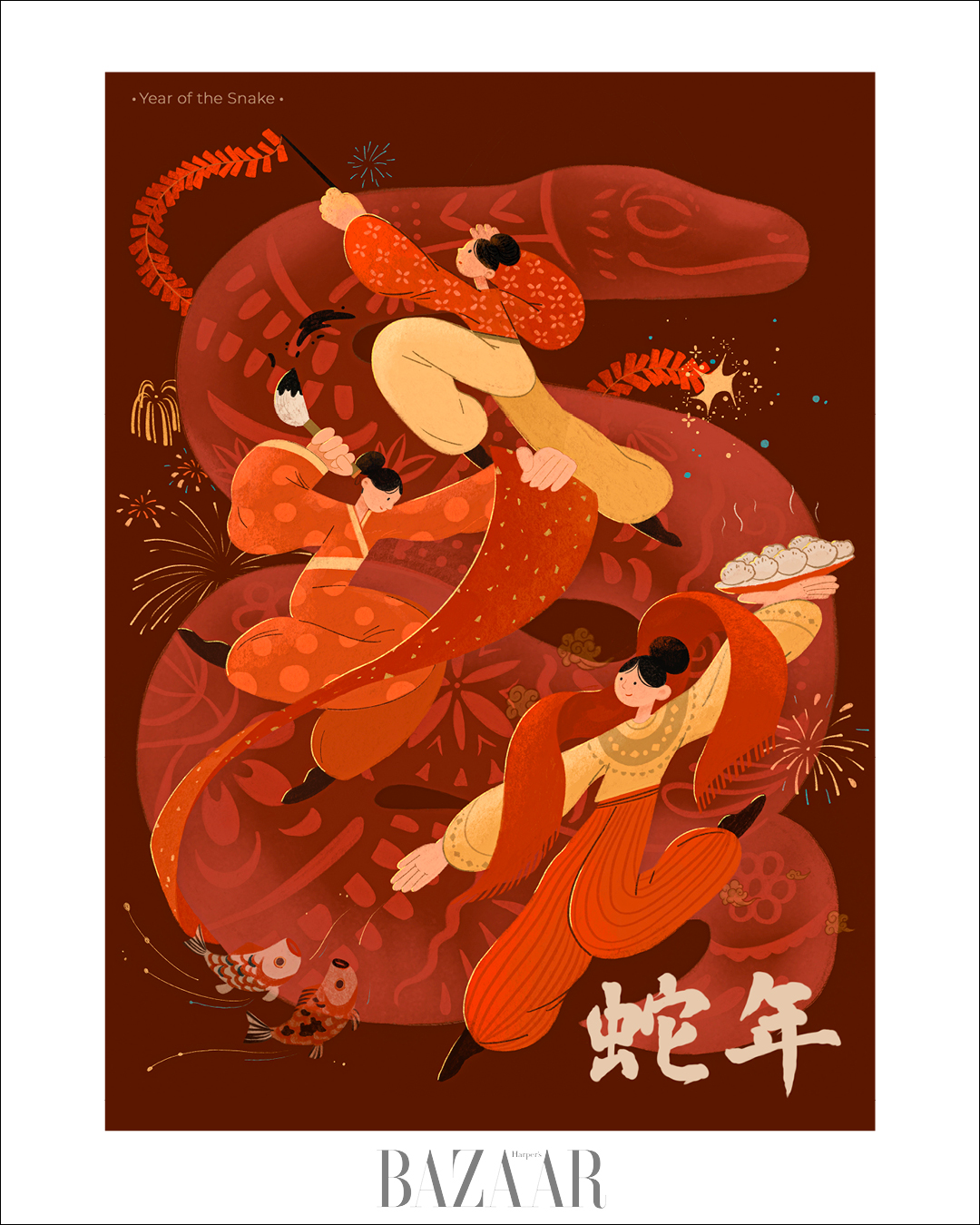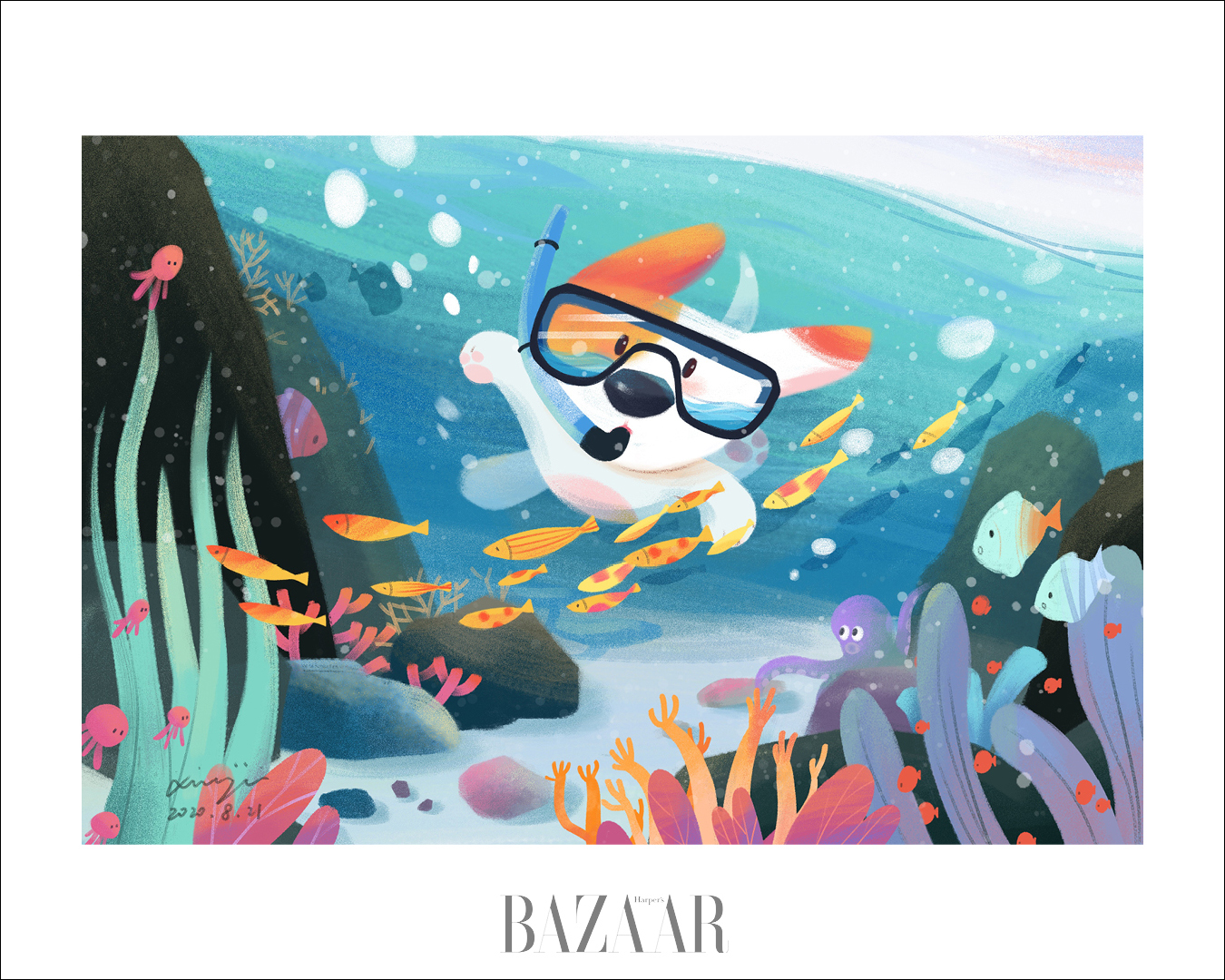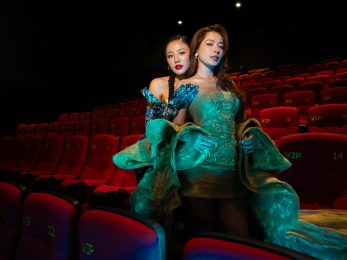
Based in New York City, Xiaojie Yang (Rebecca Yang) crafts visuals that speak to both the nostalgia of the past and the vibrancy of the present. As a designer, Xiaojie draws inspiration from the world around her, translating everyday moments into compelling stories. As a visual artist, she transforms cultural symbols into modern, dynamic narratives. And as a mother, she finds new perspectives on creativity, seeing the world through the eyes of her young daughter and shaping her art with a sense of wonder and possibility.
Xiaojie’s artistic journey began with the influence of her mother, who introduced her to the world of art. “My mother played a crucial role in shaping my love for art,” Xiaojie Yang explains. “She introduced me to its beauty and encouraged me to explore creativity freely.” This early exposure laid the foundation for her deep-rooted appreciation of visual storytelling. “Over time, I realized that art has the power to bring both joy and deep reflection,” she adds. “That became my motivation—to create work that fosters emotional connections, sparks joy, and inspires people to see the world from new perspectives.”

Holiday Glow in New York City.
One of the standout examples of her ability to capture both atmosphere and emotion is her 2024 American Graphic Design Awards Winner holiday postcard, inspired by the streets of SoHo in New York City. “The city feels vibrant and full of life—people are in high spirits, embracing the festive energy while still moving at the fast pace of urban life,” she reflects. “At the same time, the aged buildings, worn by time, bring a sense of stillness and nostalgia, creating a beautiful contrast between motion and tranquility.” This unique ability to balance energy and stillness, movement and warmth, is a defining aspect of her work.
Her cultural background plays an essential role in her creative process, often serving as a springboard for reimagining traditional motifs. In Dance of the Year of the Snake, Xiaojie Yang reinterprets the ancient symbol of the snake through a contemporary lens, using geometric shapes and dynamic lines to infuse the illustration with modern energy. “I wanted to reimagine the traditional snake motif through a contemporary lens, using a modern, geometric, and flattened style,” she explains. “By merging cultural symbolism with current design trends, I aim to make traditional Chinese elements more accessible and engaging for a global audience while preserving their deeper meanings.”

Dance Of the Year of the Snake.
Recurring themes of nostalgia and playfulness appear throughout her work, especially through depictions of childhood, animals, and everyday joys. “Life moves fast, and people often forget to pause and appreciate simple joys,” she says. “Through my work, I want to remind viewers—whether adults or children—to stay curious, embrace playfulness, and find happiness in everyday moments.” These themes of innocence and joy are woven into her illustrations, offering a reminder to celebrate the small, fleeting moments of life.
However, Xiaojie’s creative exploration is not limited to lighthearted subjects. She also tackles more complex and socially relevant themes. In The Echo of Destruction, she uses surrealism as a powerful tool to explore environmental issues, challenging the viewer to reflect on the consequences of human actions. “In works that explore heavier, more serious themes, I often turn to surrealism as a powerful tool to amplify my message,” she explains. “To me, storytelling through illustration isn’t just about creating an image—it’s about crafting an immersive experience that challenges the viewer to engage deeply with the theme, provoking thought and emotion beyond the surface.”

The Echo of Destruction.
In recent years, technology has become a major part of her artistic practice. With projects like Underwater Adventure AR, Xiaojie Yang has embraced interactive design to create immersive storytelling experiences, particularly for younger audiences. “I love how technology can transform storytelling into an interactive experience,” she says. “Seeing young audiences interact with my work in new and unexpected ways is incredibly rewarding—it turns illustration into a shared experience rather than just a visual piece.”
Despite her involvement in both commercial design and personal artistic projects, Xiaojie sees these worlds as complementary rather than separate. “Commercial design sharpens my ability to communicate effectively, while personal projects allow me to explore emotions and storytelling in a more unfiltered way,” she explains. “Sometimes, ideas from my personal work find their way into commercial projects and vice versa—it’s a continuous exchange of creativity.”

Underwater Adventure AR.
Currently, one of her new creative endeavors is a series of picture books inspired by her young daughter. “Watching her discover the world has given me new perspectives on storytelling,” she reflects. “I want to create something meaningful for her-and for other young readers as well.” Additionally, Xiaojie Yang remains excited to explore new mediums, always searching for ways to push the boundaries of art and design.
With an artistic voice that balances innocence and depth, tradition and innovation, Xiaojie Yang continues to craft work that resonates across cultures—bringing storytelling, nostalgia, and contemporary design into perfect harmony.
Harper’s Bazaar Vietnam




